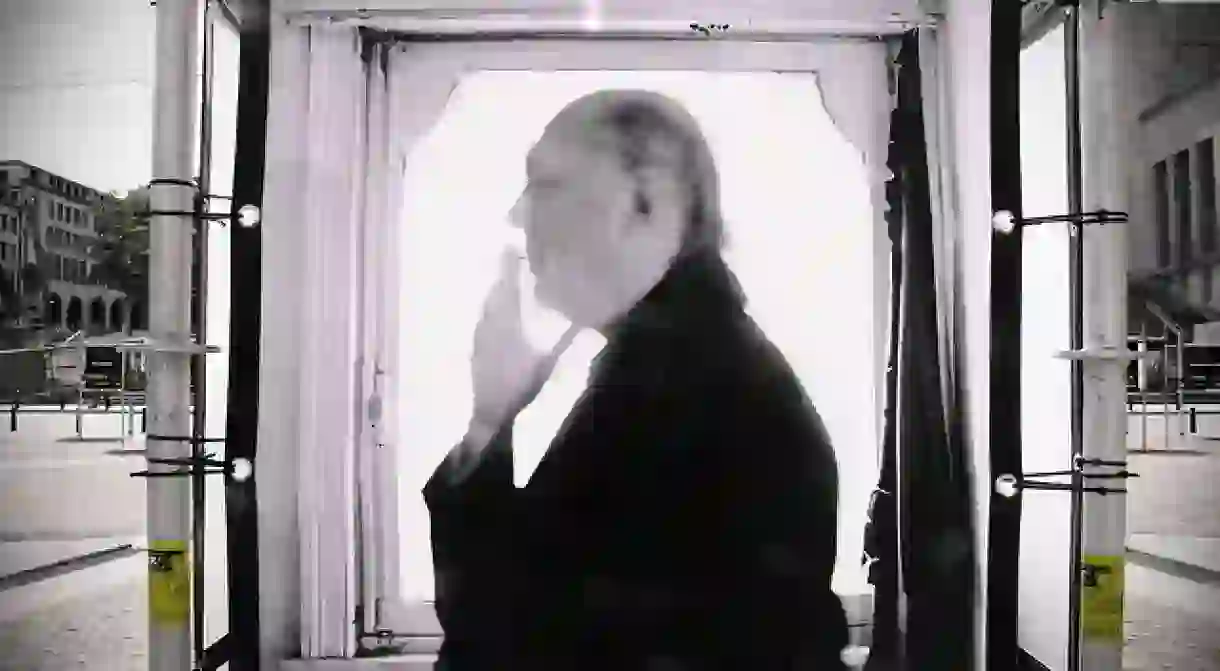Guillaume Bijl, Self-Taught Artist And Transformer Of Reality

At times ironic, at times humorous, and at times pervaded with a certain kind of sadness, the real life installations of Belgian conceptual artist Guillaume Bijl don’t leave anyone lukewarm. The Antwerp-born autodidact has spent a lifetime walking the tightrope between fiction and reality, gathering international praise and recognition along the way.
What do a driving school, a laundromat, a gymnasium, a shoe store and a waiting room all have in common? They’re just a sampling of the many mundane decors transformed into art by Guillaume Bijl. The self-taught conceptualist – now a gray-haired champion of young artists for almost seven decades – has exhibited work all around the world, from a rural Belgian house at the Venice Biennale to a wax-doll museum at ‘the museum of 100 days’ Documenta.

Bijl has built an international reputation by shining a spotlight upon the everyday. The most humdrum of places, such as a discount mattress store or a rundown supermarket, not only inspire his work, they are his work. Bijl went through great efforts in rebuilding an exact replica of a mattress store as a piece of installation art in the Kunsthalle of Münster, which he dubbed Matratzenland. New Supermarket, an installation that was displayed at the Schirn Kunsthalle in Frankfurt, had visitors walking through a carbon copy of a Tengelmann store (a German chain), utterly believable with its promotional signs, stacked racks of household products and checkout tills.

By placing unexpected boring realities within the contexts of highbrow exhibition spaces and museums, Bijl reveals a philosophical streak. The question ‘What is art?’ never seems far from his thoughts. A strong first indicator of this inclination was already present in his debut installation at the end of the seventies, when a local Antwerp gallery served as the stage. The illusion of Driving School Z was a convincing one. Passers-by who assumed the gallery had been turned into an actual driving school even popped in to inquire about lessons (a similar sort of confusion must have been felt by the unsuspecting seagulls of the Dutch seaside town of Hoorn when Bijl placed ten stuffed congeners in their midst).
All the while, a fictional pamphlet written by the artist informed the befuddled visitor of the fact that the government had deemed art superfluous and that all art spaces were to be turned into social institutions that serve an actual purpose. Bijl’s Art Liquidation Project inspired a fake travel agency, hair salon, psychiatric hospital, shoe shop and many more ‘functional’ illusions. However, many critics interpreted the initiative as an anti-art statement, which wasn’t at all what Bijl had in mind. A closer look at his body of work reveals quite the contrary: Bijl tends to employ art as a tool in critiquing social reality.
Take the New Supermarket piece for example – a version of which has also been displayed at the Tate Liverpool in 2003. Walking around the familiar setting of a supermarket (complete except for employees) without the ability to buy something left visitors feeling anxious, even frustrated. By painstakingly recreating every trivial detail and putting the stereotypical decor of our day-to-day routine on display, Bijl forces us to reflect on triviality and our behavior. The workings of capitalism and our consumerist behavior become that much more tangible.
Projects like this – and there are many – have made Guillaume Bijl a revered name in the conceptual art world. His works have reached international audiences at the Venice Biennale, the Witte de With Center for Contemporary Art in Rotterdam and the Kunsthalle of Münster. Part theorist (he has divided and cataloged his own work into five distinct categories), he has has also taught for ten years at the Kunstakademie of Münster. Today, the veteran artist of international allure lives in the place where it all began – his home city of Antwerp. His commitment to the nurturing of young visionaries persists, and he is widely known as a champion of artist’s interests.













